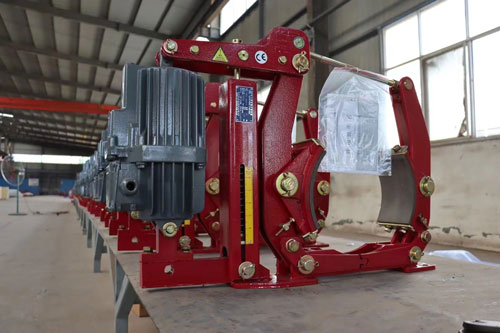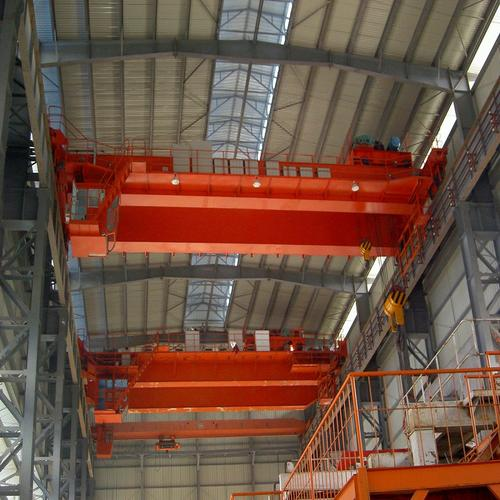The brakes of bridge cranes are usually used to control the crane’s movement when it stops or decelerates, and are important components to ensure its safe and reliable operation. Bridge cranes are usually equipped with a various protective device to ensure operational safety and long-term reliability of equipment. The following is an overview of the working principle of bridge crane brakes and bridge crane protection devices.

Bridge cranes usually use electric motors as the main driving force, such as electric motors for hoisting mechanisms and trolley mechanisms.
Electric brakes are mainly used to control the movement of motors when they stop or decelerate. The working principle includes generating braking torque by controlling the electromagnetic field to stop or decelerate the rotating parts of the motor (such as the rotor) to a safe operating speed.
Electromagnetic brakes work on the electromagnetic principle. When current passes through the electromagnetic coil, electromagnetic force is generated to press or clamp the brake body (such as the brake disc), thereby braking the rotating parts.
When the motor stops or decelerates, the electromagnetic brake automatically acts to prevent further movement of the motor, ensuring that the crane can stop quickly or decelerate steadily when needed.
Brake discs and brake drums are key components of brakes and are usually used in combination with electromagnetic brakes.
The brake disc is mounted on the motor shaft, and the brake drum is mounted on the periphery of the motor or on the transmission system.
The brake disc and the brake drum are in contact through the brake lining or brake pad. When the electromagnetic brake is applied, the moving parts are braked or stopped by friction.
The braking control system is used to control the operation of the electromagnetic brake, usually including the control of power supply, control of current and adjustment of braking torque.
In crane operation, the braking control system needs to ensure that the brake can respond quickly and work stably to ensure the safety and reliability of the crane when stopping or decelerating.
In addition to conventional electric brakes, bridge cranes are usually equipped with emergency braking systems.
The emergency braking system is usually a manual or automatic backup braking device, such as an emergency brake button or an emergency power disconnect device, which can quickly stop the crane when necessary.
Bridge cranes are usually equipped with a variety of protective devices to ensure operational safety and long-term reliability of equipment. The following are common bridge crane protection devices.

The weight of the lifting object is detected by a sensor or weighing device. Once the rated load is exceeded, the system will automatically stop the lifting operation to prevent overloading accidents.
Monitor the height of the lifting hook or lifting object. Once the set upper limit height is reached, the stop operation will be triggered to prevent the lifting object from colliding with or damaging other facilities.
Control the up and down travel of the lifting mechanism to ensure that the lifting object does not exceed the safety range. Usually achieved through limit switches or encoders.
Control the travel range of the trolley or car to prevent it from exceeding the maximum operating area of the bridge or supporting bridge frame.
Control the moving speed of each part of the crane to prevent the operation from being out of control or accidents due to excessive speed.
The emergency stop button configured on the operating console, cab and around the crane will immediately stop the operation of all moving parts once pressed to deal with emergencies.
When the power supply is abnormal or the power is cut off, it ensures that the crane can stop running safely and avoids sudden start-up caused by power restoration.
Monitors the operating temperature of components such as motors and gearboxes. Once it exceeds the safe range, it will automatically stop working to prevent equipment damage or fire.
Detect the position and movement status of each component to ensure operation within the safe range, and provide real-time position information to the operator.
Prevent dangerous situations caused by misoperation, such as the inability to lift while the trolley is moving, and the inability to walk while lifting.
During the movement or lifting process of the bridge crane, it monitors the surrounding environment. Once an obstacle is detected, it will promptly issue an alarm or stop the action to prevent collision accidents.
These protection devices work together to ensure that the bridge crane is safe and reliable during operation and prevent accidents and damage.
If you have any questions about bridge crane safety devices and brakes, please contact us freely. And if you need crane and hoist, please leave your requirements on our website or send email to us!